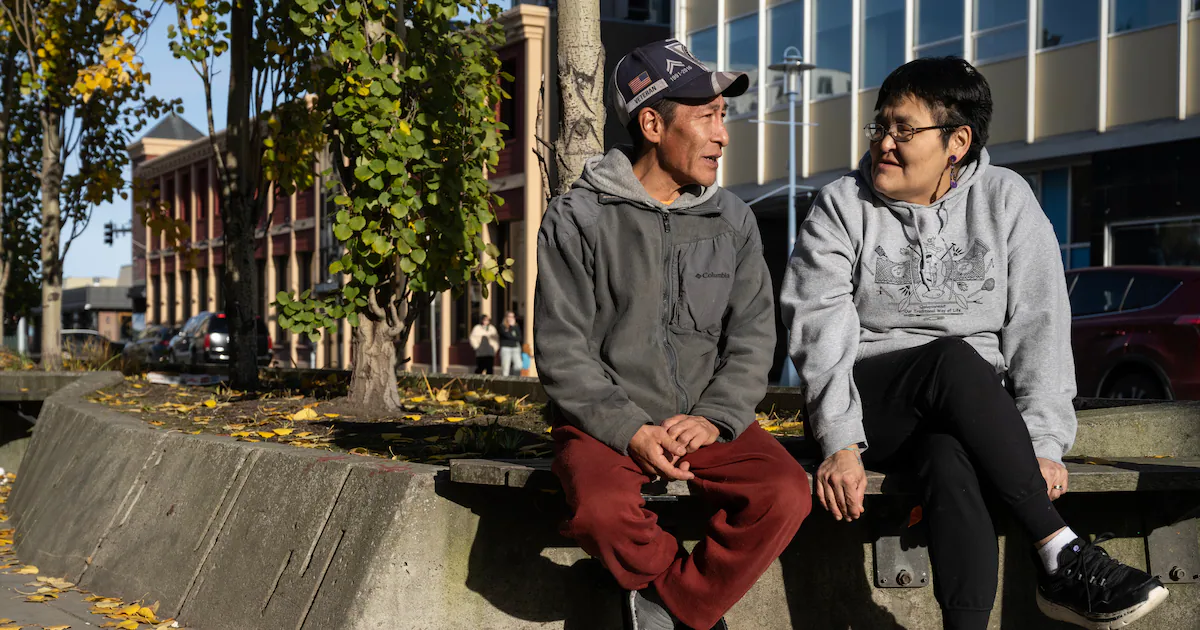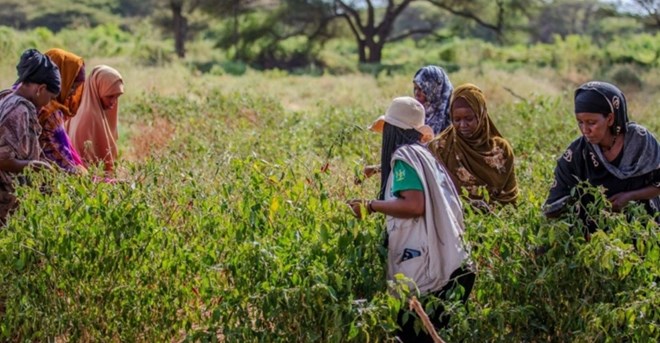Copyright Anchorage Daily News

On Sunday, Harvey and Xenia Dock and their children said goodbye to their house and their village of Nightmute and boarded a series of planes. They were reluctant to leave. The community had not been under a mass evacuation like Kipnuk, where Harvey is originally from. The family’s home had not been flooded or demolished by the fierce storm surge. But Nightmute’s sewer lagoons had overtopped, fuel had spilled, and they grew worried about living amid contamination. They spent Sunday night at the Egan Center in downtown Anchorage, sleeping on cots with more than 100 other people evacuated from the Yukon-Kuskokwim Delta after a catastrophic storm caused widespread damage to the region’s villages a week earlier. Hundreds of evacuees like the Dock family are now staring down a long and uncertain displacement in Alaska’s biggest city. “It was the hardest decision I had to make,” Harvey Dock said, taking a cigarette break on the sidewalk outside Monday. “It was my decision for the safety of my wife, my children. There could be contamination. You don’t know what kind of pollution came from those tanks.” Long-term shelter With evacuations wrapping up, officials say organizations are now looking toward finding families longer-term housing so they can move out of mass shelters. “We know it’s not comfortable,” said Taylar Sausen, a Red Cross spokesperson. A mass shelter is “a temporary solution.” The American Red Cross along with tribal health organizations and the municipality are “working at finding more comfortable and long-term accommodations” for evacuated people, which may include hotel rooms or placements in rental homes or with family, Sausen said. Specifics on the hotel rooms and other private housing weren’t available Monday. Mayor Suzanne LaFrance is expected to hold a briefing Tuesday on the city’s continuing role in hosting evacuees from Western Alaska. Many people are already staying with kin or have found housing on their own. According to the American Red Cross, as of midnight Monday, about 250 people were in mass shelters with 75 staying at the Alaska Airlines Center shelter, 168 at the Egan Center and 16 in Bethel. That represents less than half of the roughly 630 people who had been evacuated as of Sunday, according to a report from the emergency operations center. Many people have stayed with family members and friends in other Y-K Delta communities or in Anchorage, or secured private housing on their own or moved into medical housing. “Staying with family and friends is more comfortable than staying on a cot in a shelter,” Sausen said. The American Red Cross will want to get in touch with all evacuees, she said, to let people know what types of financial or other assistance will be available. [How to help the ‘evolving needs’ of Western Alaska evacuees in Anchorage] In Bethel, officials said they had wrapped up a major airlift operation that resulted in 659 people being evacuated from their communities to Anchorage, the Alaska National Guard said Sunday evening. The National Guard said it would still conduct small evacuations, if requested. In the coming days, the number of Alaska Organized Militia personnel in Bethel would increase from about 115 to 200 to help the guard clear debris and deliver equipment or fuel to communities before winter, the guard said Sunday. Other organizations, like the Yukon-Kuskokwim Health Corp., said they also would prioritize spending the week delivering supplies, fixing damaged homes or infrastructure and helping communities clean up. Meanwhile, families like the Docks from Nightmute are enrolling their children in Anchorage schools. As of Monday, 65 students began classes at schools across the district, including College Gate Elementary School’s Yup’ik immersion program, the Alaska Native Cultural Charter School, Wendler Middle School, Bettye Davis East Anchorage High School and King Tech High School, according to a statement from the district. Some students are integrating into neighborhood schools while they stay with nearby family members. “These sites were chosen to help students remain connected to familiar faces, peers, and educators, and to ensure families can stay together whenever possible,” the statement from district spokesperson Corey Allen Young said. “ASD’s response brings together staff from migrant education, Indigenous education, immersion programs, the English language learners program, health services, mental health services, transportation, and more. Their shared focus is to provide stability, care, and cultural connection that honors every student.” At a Friday press conference, Superintendent Jharrett Bryantt said the Anchorage School District may add as many as 200 students, and will try to keep those students together in cohorts. Bryantt said the district’s school buses were used to shuttle evacuees from the airport to shelters, and the district has provided translation services and supplies at the Alaska Airlines Center shelter. [Relief workers look to begin ‘mucking out’ flood-damaged homes in Western Alaska] ‘The hardest decision’ The Dock family said they would rather not spend long months in Anchorage, but believe their home and others in Nightmute need to be rebuilt in a safer location, on higher ground. Otherwise, Xenia Dock said, more storms will come and cause havoc again. Today, they are getting their bearings in Anchorage. The younger kids need to be enrolled in school. They are hoping a hotel room, or other housing, comes through soon. Their eldest daughter, 15, is nervous and has talked about wishing she stayed in Nightmute, her mom said. Back home, they’d be processing burbot, called lush fish, right about now, Xenia Dock said. They’d be preparing to ride snowmachine trails to Kipnuk to visit family on Halloween. Now, it’s Anchorage for the time being. It could be 18 months or more to rebuild, Harvey Dock said. “I don’t like the traffic, to tell you the truth,” said Dock. Bruce Igkurak was evacuated from Kwigillingok on Sunday too. He said his three-person household is staying with other family members in Anchorage and Wasilla now. His home is “ruined,” he said — floated off the foundation like so many others. It is now filled in places with deep mud. He was among those who stayed the longest, helping others evacuate. The moment when he, too, got on the plane was painful. “We live off the land, most of us,” he said. “It’s hard to leave that area.” As soon as possible, he hopes to go back to work on cleanup and rebuilding in Kwigillingok. “I have a lot of hope,” he said. “I’m not sure who wants to go back, but we’ll make it a home, someplace they can come back to.”



